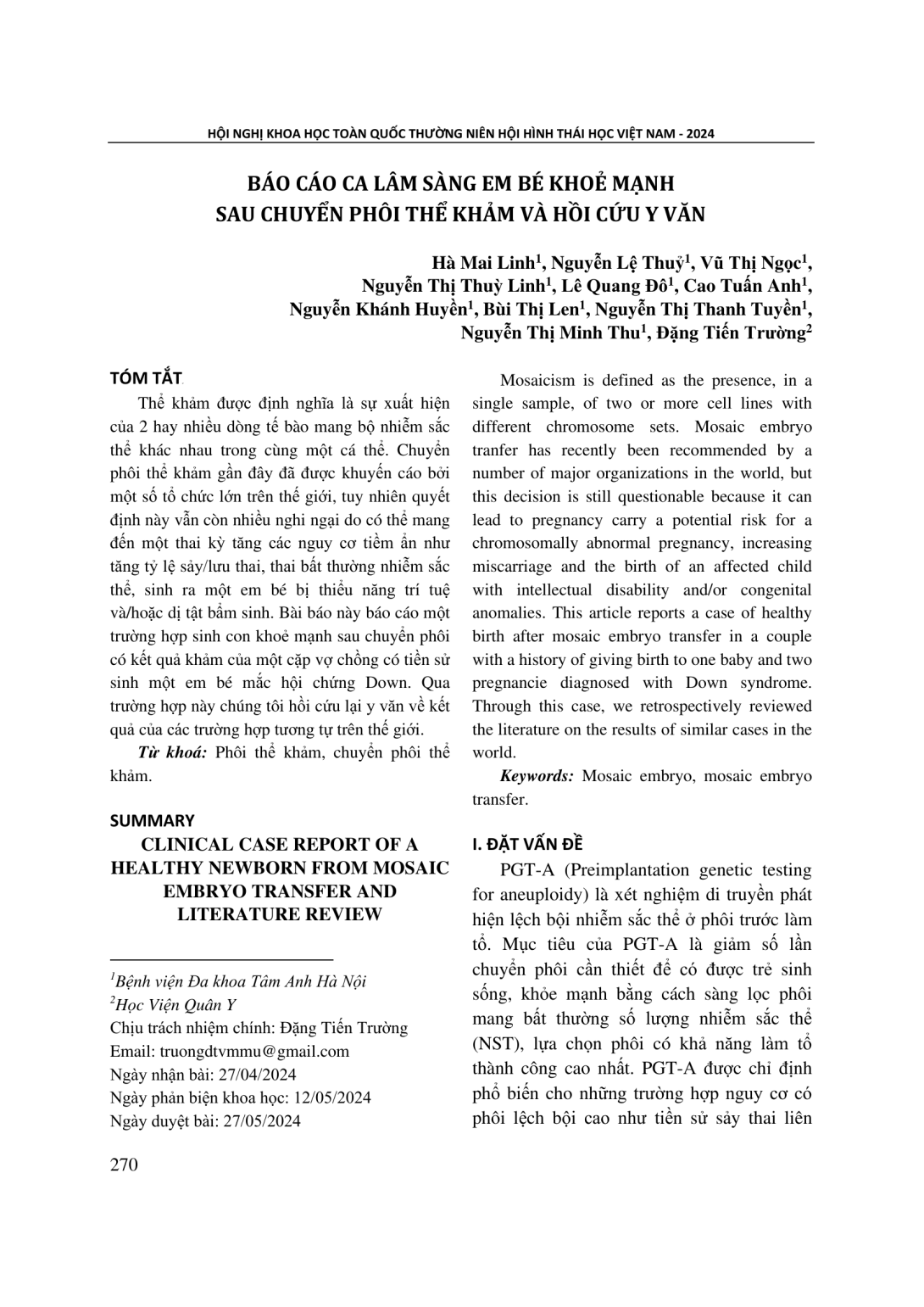
Thể khảm được định nghĩa là sự xuất hiện của 2 hay nhiều dòng tế bào mang bộ nhiễm sắc thể khác nhau trong cùng một cá thể. Chuyển phôi thể khảm gần đây đã được khuyến cáo bởi một số tổ chức lớn trên thế giới, tuy nhiên quyết định này vẫn còn nhiều nghi ngại do có thể mang đến một thai kỳ tăng các nguy cơ tiềm ẩn như tăng tỷ lệ sảy/lưu thai, thai bất thường nhiễm sắc thể, sinh ra một em bé bị thiểu năng trí tuệ và/hoặc dị tật bẩm sinh. Bài báo này báo cáo một trường hợp sinh con khoẻ mạnh sau chuyển phôi có kết quả khảm của một cặp vợ chồng có tiền sử sinh một em bé mắc hội chứng Down. Qua trường hợp này chúng tôi hồi cứu lại y văn về kết quả của các trường hợp tương tự trên thế giới.
Mosaicism is defined as the presence, in a single sample, of two or more cell lines with different chromosome sets. Mosaic embryo tranfer has recently been recommended by a number of major organizations in the world, but this decision is still questionable because it can lead to pregnancy carry a potential risk for a chromosomally abnormal pregnancy, increasing miscarriage and the birth of an affected child with intellectual disability and/or congenital anomalies. This article reports a case of healthy birth after mosaic embryo transfer in a couple with a history of giving birth to one baby and two pregnancie diagnosed with Down syndrome. Through this case, we retrospectively reviewed the literature on the results of similar cases in the world.
- Đăng nhập để gửi ý kiến
